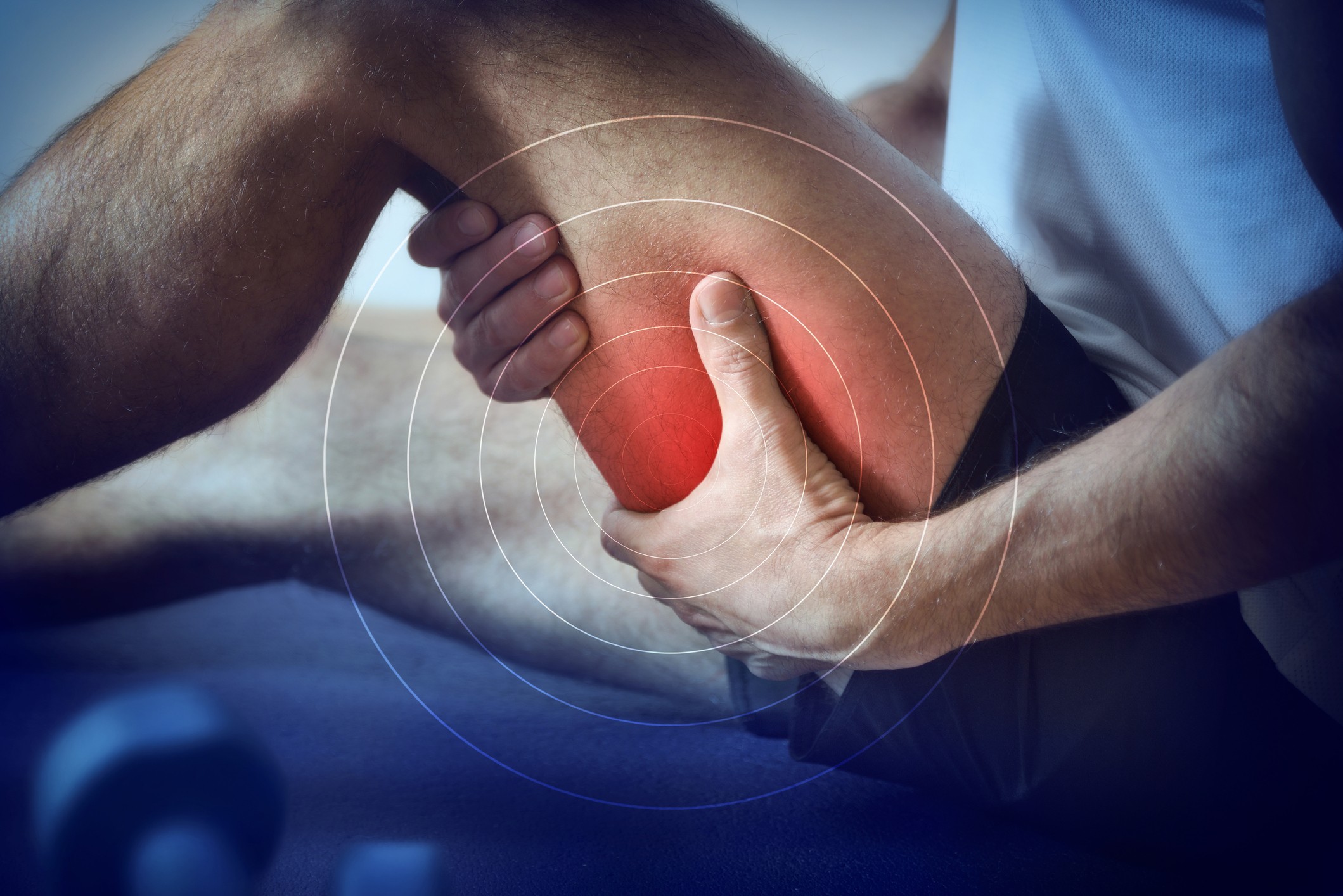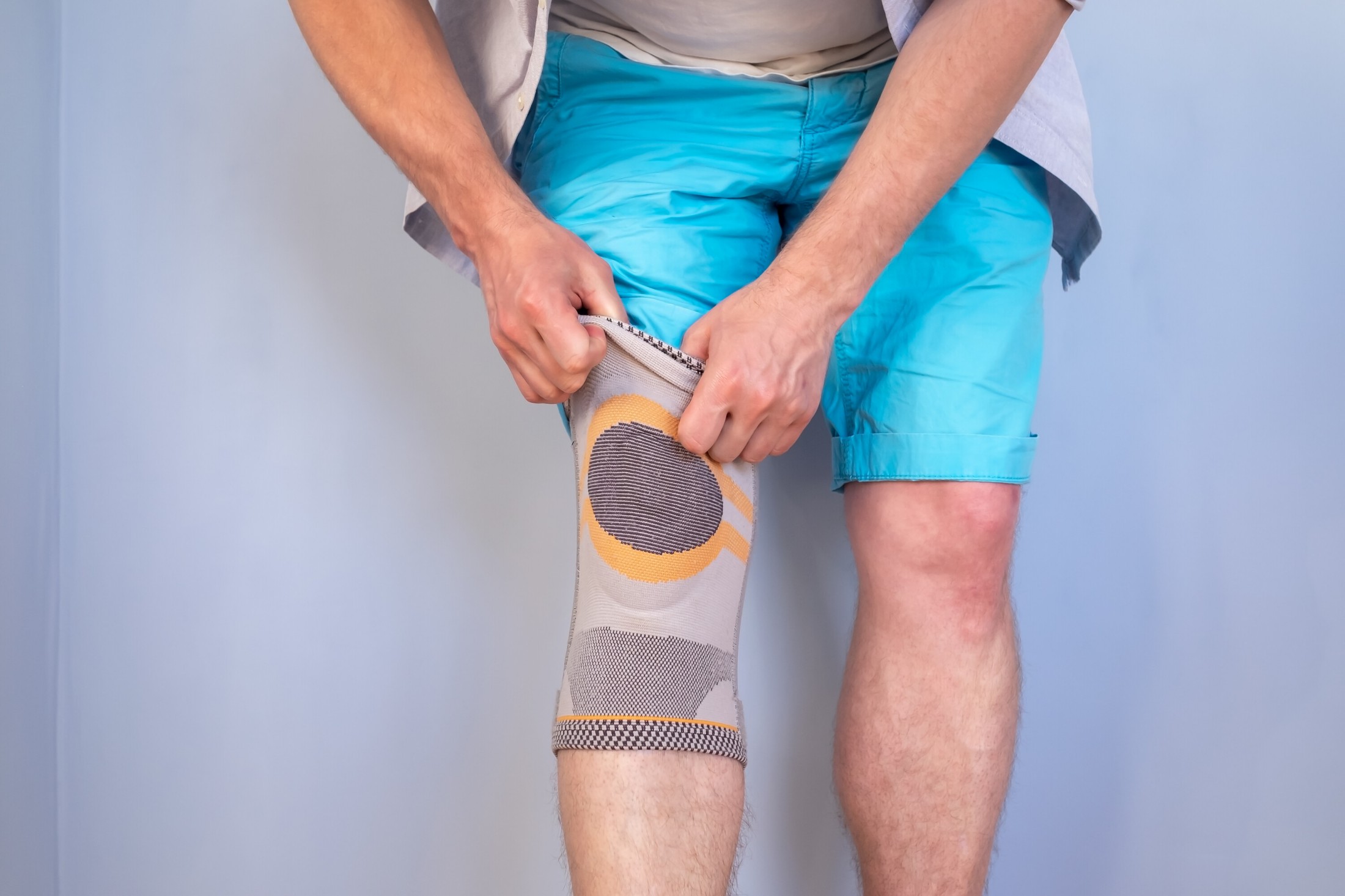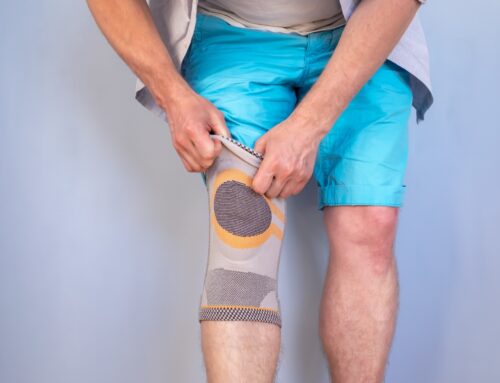Elbow injury is a common issue that affects people of all ages and lifestyles. Whether it’s caused by repetitive motions, acute injuries, or underlying medical conditions, elbow pain can disrupt daily activities like lifting, typing, or even holding objects. For many, this discomfort interferes with work, hobbies, and overall quality of life.
The causes of elbow injury are varied and can range from overuse injuries, such as tennis or golfer’s elbow, to more severe issues like fractures or arthritis. Even nerve-related conditions, such as cubital tunnel syndrome, can contribute to pain and mobility challenges in the elbow joint.
Supportive solutions like elbow braces or compression sleeves help alleviating discomfort and promoting healing. These devices help stabilize the joint, reduce swelling, and improve circulation, making them a practical and accessible option for relief.
Common Causes of Elbow Injury
Elbow injury can stem from various causes, ranging from repetitive strain to acute injuries and underlying medical conditions. Identifying the source of discomfort is important for determining the most effective treatment and management strategies.
Overuse and Repetitive Strain Injuries
Repetitive motions in daily activities, work tasks, or sports are a leading cause of elbow injury. Two common conditions associated with repetitive strain are:
- Tennis Elbow (Lateral Epicondylitis)
This occurs when repetitive wrist and arm motions cause inflammation of the tendons on the outer part of the elbow. It’s often seen in individuals who engage in activities like racquet sports or manual labour. - Golfer’s Elbow (Medial Epicondylitis)
Similar to tennis elbow, this condition affects the tendons on the inner side of the elbow and is caused by repetitive gripping or wrist flexion.
Both conditions can lead to pain, stiffness, and weakness, making it difficult to perform even simple tasks.
Acute Injuries
Sudden injuries to the elbow can cause significant pain and impair mobility. These injuries include:
- Fractures
Breaks in the bones of the elbow, often caused by falls or direct impacts. - Dislocations
When the bones of the elbow joint are forced out of alignment. - Ligament Sprains
Stretching or tearing of the ligaments that stabilize the elbow.
Symptoms of acute injuries often include swelling, severe pain, bruising, and reduced range of motion. Prompt medical attention is necessary for proper healing and recovery.
Medical Conditions
Certain medical conditions can either cause elbow injury or exacerbate existing discomfort:
- Arthritis
Both rheumatoid arthritis and osteoarthritis can affect the elbow joint, leading to stiffness, swelling, and chronic pain. - Nerve Compression (Cubital Tunnel Syndrome)
This occurs when the ulnar nerve, which runs along the inner elbow, becomes compressed or irritated. Symptoms include pain, tingling, or numbness in the elbow and fingers.
These conditions often require specialized treatment and long-term management to alleviate symptoms and maintain joint function.
Signs and Symptoms of Elbow Injury
Elbow injury can manifest in various ways, depending on the underlying cause.
Pain Around the Elbow Joint
Elbow pain can present in various forms, from sharp and stabbing sensations to a persistent throbbing or dull ache. The type and severity of pain often depend on the underlying cause. For instance:
- Sharp or Sudden Pain: This is common with acute injuries such as fractures or ligament sprains. The pain may occur immediately after an impact or strain.
- Throbbing Pain: Often associated with overuse injuries like tennis elbow or golfer’s elbow, this pain typically worsens during repetitive motions or after prolonged activity.
- Dull Ache: Chronic conditions such as arthritis may cause a consistent, low-level ache that persists even during rest.
The specific location of the pain can also provide important clues. Pain on the outer side of the elbow may indicate lateral epicondylitis (tennis elbow), while discomfort on the inner side is often linked to medial epicondylitis (golfer’s elbow). Paying attention to how the pain changes with movement or rest can help in diagnosing the issue and determining the appropriate treatment.
Swelling, Stiffness, or Reduced Range of Motion
Swelling and stiffness in the elbow joint are signs of inflammation, which could result from injuries, infections, or chronic conditions like arthritis. This inflammation often restricts movement, making it difficult to fully straighten or bend the arm. You may notice:
- Visible Swelling: The joint might appear puffy or larger than usual due to fluid buildup, often accompanied by redness and warmth.
- Stiffness: A tight or rigid feeling around the joint can occur, especially after periods of inactivity, such as first thing in the morning or after sitting for extended periods.
- Tenderness or Pain on Movement: Simple actions like lifting objects, gripping, or rotating the forearm can exacerbate the stiffness and cause discomfort.
Severe swelling or an inability to move the joint could indicate a more serious issue, such as a dislocation or severe arthritis flare, and should be evaluated by a healthcare professional promptly.
Weakness or Tingling Sensations
Weakness or tingling in the arm or hand often points to nerve-related issues, such as cubital tunnel syndrome (compression of the ulnar nerve) or radial nerve entrapment. These conditions disrupt normal nerve function, leading to symptoms like:
- Weakness: Difficulty gripping objects or a feeling of instability when trying to lift or hold items.
- Tingling or Numbness: A “pins and needles” sensation or numbness often radiates to the fingers, particularly the ring and pinky fingers in cases of ulnar nerve compression.
- Pain That Travels: In some cases, pain may shoot down the arm or into the wrist and fingers, depending on which nerve is affected.
These symptoms can worsen at night, during certain arm positions, or after prolonged elbow bending, as the nerves may be further compressed or irritated. Persistent weakness or loss of function in the hand or arm warrants immediate medical attention to prevent long-term nerve damage.
When to Seek Medical Attention for Elbow Injury
While mild elbow injury often improves with rest and self-care, certain situations require professional evaluation to prevent further complications. You should seek medical attention if you experience any of the following:
- Persistent Pain
If the pain doesn’t improve with rest, ice, or over-the-counter remedies, it could indicate a more serious underlying issue, such as tendon damage or arthritis, that requires medical intervention. - Visible Deformities or Severe Swelling
Any noticeable deformities in the elbow joint or significant swelling could be a sign of a fracture, dislocation, or severe ligament injury. Immediate care is essential to ensure proper alignment and healing. - Loss of Function or Numbness
Difficulty moving the elbow or arm, coupled with numbness or tingling sensations, could indicate nerve compression or severe damage to the joint. These symptoms should not be ignored, as they may worsen without treatment.
Prompt evaluation by a healthcare professional ensures an accurate diagnosis and allows for appropriate treatment to prevent long-term damage or chronic discomfort. If in doubt, it’s always better to err on the side of caution and consult a medical expert for persistent or severe elbow pain.
Treatment Options for Elbow Injury
Effective treatment for elbow injury depends on the underlying cause, severity of the condition, and individual needs. A combination of self-care and professional interventions can help alleviate discomfort and restore function.
Rest and Activity Modification
Giving the elbow joint time to heal is essential, especially for injuries caused by overuse or repetitive motions. Rest can reduce inflammation and allow the tissues to recover. Adjusting daily activities, such as using proper techniques or alternating tasks, can also minimize strain on the joint and prevent further damage.
Using Elbow Braces or Sleeves
Elbow braces and compression sleeves are valuable tools in managing elbow pain. Options include immobilizing braces for acute injuries and flexible compression sleeves for ongoing support.
These devices provide stability, reduce swelling, and improve blood flow to the affected area. They also alleviate discomfort by limiting unnecessary movement and supporting weakened structures.
Physical Therapy and Exercises
Stretching and strengthening exercises are essential for improving flexibility, restoring range of motion, and preventing future issues. A physical therapist can guide you through:
- Gentle stretches to reduce stiffness and promote mobility.
- Strength-building routines to support the muscles and tendons around the elbow joint.
Engaging in a regular exercise program tailored to your condition can speed up recovery and prevent recurrence.
Medications and Other Interventions
For more severe cases of elbow injury, additional interventions may be necessary:
- Nonsteroidal anti-inflammatory drugs (NSAIDs) like ibuprofen can help reduce pain and inflammation.
- Steroid Injections may be recommended for persistent inflammation that doesn’t respond to conservative treatments.
- In rare cases, surgery may be required to repair severe injuries or address structural problems causing chronic pain.
Choosing the right treatment approach often involves combining several methods. Consulting with a healthcare professional can ensure an effective plan tailored to your specific needs, leading to better outcomes and long-term relief.
Preventing Elbow Injury and Pain
Taking proactive steps to prevent elbow injury can help you maintain healthy joints and avoid long-term discomfort. By incorporating proper techniques, regular exercise, and early intervention, you can reduce the risk of injuries and manage minor issues before they become severe.
Proper Technique and Equipment
Using proper technique and equipment during daily activities or sports is essential for minimizing strain on the elbow joint. Adjusting posture and form plays a significant role in reducing stress on the elbow and surrounding muscles. Ensuring proper alignment while performing repetitive tasks, lifting objects, or engaging in sports can prevent unnecessary strain.
Similarly, using ergonomic tools and protective gear can further reduce the risk of injury. Specially designed keyboards or tools help reduce strain during work, while protective gear like elbow pads can safeguard against high-impact injuries during physical activities.
Regular Exercise and Stretching
Maintaining flexibility and strength in the muscles surrounding the elbow is crucial for preventing injuries. Regular stretching exercises help keep the joint supple and reduce stiffness, especially for those who perform repetitive motions. Strengthening the arm and forearm muscles enhances the elbow’s ability to handle physical stress, reducing the likelihood of injuries.
A balanced routine of stretching and strengthening exercises can improve joint stability, enhance mobility, and protect against future issues.
Early Intervention
Addressing minor issues early is key to preventing them from escalating into more serious conditions. Paying attention to mild discomfort and acting promptly—such as resting and applying ice—can stop the problem from worsening. Routine check-ups with a healthcare professional are equally important for managing chronic conditions or ongoing elbow discomfort.
Early detection ensures timely treatment, often leading to better outcomes and avoiding prolonged recovery periods. Taking proactive steps can help maintain elbow health and reduce the risk of long-term complications
How Elbow Braces and Sleeves Help
Elbow braces and sleeves are practical tools for managing and preventing elbow injury. They provide targeted support to the joint, promoting healing and alleviating discomfort in a variety of conditions.
Types of support available:
- Compression Sleeves: These are flexible, lightweight sleeves that provide gentle compression to the elbow joint. They are ideal for reducing swelling, improving circulation, and offering mild support during everyday activities or physical exercise.
- Immobilizing Braces: These braces are designed to restrict movement in the elbow joint, making them suitable for acute injuries such as sprains, dislocations, or post-surgical recovery. They help protect the joint and promote healing by preventing unnecessary strain.
When and How to Use Them Effectively
Elbow braces and sleeves should be used based on the type and severity of your condition:
- For Mild Discomfort or Overuse Injuries
- For Acute Injuries or Severe Pain
- During Rehabilitation or Physical Activity
Benefits of Elbow Braces and Sleeves
Elbow braces and sleeves offer a range of benefits that make them an effective, non-invasive option for managing and preventing elbow injury. Both braces and sleeves minimize swelling by applying gentle, consistent pressure to the joint.
These devices provide joint stability by supporting the elbow and limiting unnecessary movement, which helps prevent further strain or injury.
Whether you are recovering from an injury or managing chronic elbow pain, braces and sleeves can significantly enhance joint health and daily comfort.
Finding Relief from Elbow Injury
Elbow injury can significantly impact daily life, but understanding its causes, recognizing symptoms, and seeking appropriate treatment can make a world of difference. From overuse injuries and acute trauma to underlying medical conditions, the sources of elbow pain are diverse. Identifying these causes and addressing them with the right combination of rest, physical therapy, and supportive tools like braces or sleeves is essential for recovery and prevention.
If you’re experiencing persistent discomfort or symptoms that interfere with your routine, consulting a healthcare professional is the best first step. They can provide an accurate diagnosis and recommend effective treatments tailored to your needs. Supportive solutions, such as compression sleeves or immobilizing braces, can also play a vital role in managing pain, reducing swelling, and stabilizing the joint.
Book a professional fitting for your elbow brace or sleeve with Care-Med. Our experts will ensure you receive the perfect fit for maximum comfort and effectiveness. Whether you’re recovering from an injury or managing ongoing elbow pain, our personalized solutions are designed to meet your needs.
Share This Story, Choose Your Platform!
Table of Contents
We specialize in orthotics, body braces, and compression wear tailored to your unique needs in Toronto. Reach out to us at info@caremed.care or call 416-782-5353 to book your fitting and consultation.
Experience the difference of customized solutions designed just for you.











